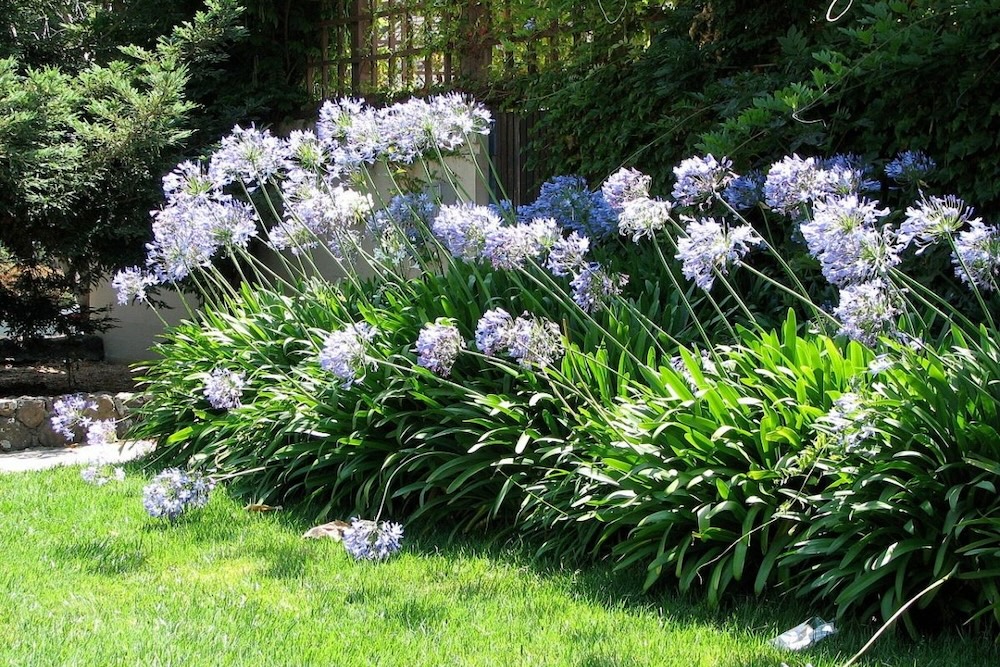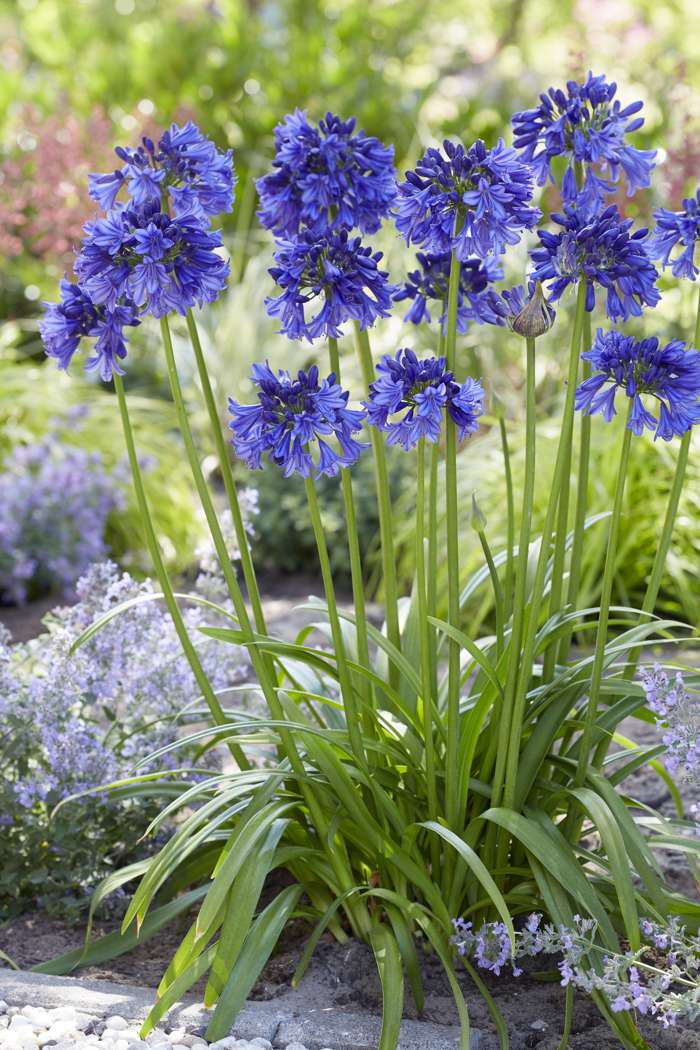Agapanthus Growing Conditions: Soil, Sunlight, and Watering
Agapanthus Growing Conditions: Soil, Sunlight, and Watering
Blog Article
Understanding the Art of Agapanthus Treatment: Important Steps for Healthy Growth and Vibrant Blossoms
In the realm of horticulture, the growing of agapanthus stands as a satisfying venture for those who look for to support these stylish flowering plants. From choosing the right selection to grasping trimming strategies, the journey in the direction of cultivating prospering agapanthus plants is multifaceted and holds the vital to opening the full capacity of these organic treasures.

Picking the Right Agapanthus Variety

When selecting the right Agapanthus variety for your yard, think about aspects such as environment suitability, blossom shade, and development behavior. Additionally, consider the environment in your region to guarantee the Agapanthus variety you pick can flourish in your details conditions. Recognizing the growth practice of different Agapanthus selections is critical for proper placement within your yard.
Suitable Planting Problems
Considering the optimum environmental requirements is crucial for successful Agapanthus growing. Agapanthus flourishes in well-draining dirt with a slightly acidic to neutral pH level. When planting, pick a location that gets full sunshine to partial shade. In hotter climates, giving some mid-day shade can protect against scorching of the fallen leaves. Agapanthus plants are delicate to cold temperatures and should be protected from frost throughout winter months.
To guarantee healthy and balanced development and vibrant flowers, plant Agapanthus light bulbs at a depth of concerning 2-4 inches and area them 8-12 inches apart. Adding organic issue, such as garden compost, to the soil can improve drain and fertility, promoting durable origin advancement. Mulching around the base of the plants aids keep dampness and reduces weed growth. Regular watering is vital, particularly throughout the growing period, to maintain the soil consistently wet but not saturated.
Watering and Fertilizing Tips
Preserving correct wetness degrees and providing crucial nutrients are vital components in the treatment routine for Agapanthus plants. When it comes to sprinkling Agapanthus, it is essential to strike an equilibrium. These plants favor regularly wet soil but are susceptible to root rot if overwatered.
Fertilizing Agapanthus is necessary for advertising healthy development and respected blossoms. Use a balanced plant food, such as a 10-10-10 formula, in the very early spring as new development arises. Repeat this application every 6-8 weeks throughout the expanding period. Stay clear of extreme fertilizing, as it can bring about lavish vegetation at the expenditure of blooms. Always comply with the manufacturer's instructions for correct dilution and application approaches. By complying with these watering and fertilizing suggestions, you investigate this site can guarantee your Agapanthus plants prosper and create vivid, resilient blossoms.
Pruning Strategies for Agapanthus
Trimming Agapanthus plants at the proper times and with proper methods is vital for keeping their wellness and advertising ideal growth and blooming. The perfect time to prune Agapanthus remains in late winter or very early spring before new development emerges. Beginning by getting rid of any kind of yellowing or dead fallen leaves near the base of the plant. Cut them as close to the ground as feasible without harming the arising shoots.
Deadheading invested blossoms can likewise redirect the plant's energy into creating more blooms rather than setting seeds. If you desire to collect seeds for propagation, leave some flowers to mature and dry on the plant.
Remember to utilize clean, sharp tools to make precise cuts and decrease the threat of introducing diseases. Agapanthus. Regular pruning will certainly check out here assist maintain your Agapanthus looking neat and healthy and balanced while making sure an abundant screen of gorgeous blossoms
Handling Typical Bugs and Illness
After guaranteeing correct pruning strategies for Agapanthus, it is essential to attend to typical bugs and illness that can affect the wellness and vitality of these plants. One typical insect that impacts Agapanthus is the Agapanthus gall midge.
One more typical issue is fungal fallen leave area, which provides as dark sores on the fallen leaves. To avoid fungal conditions, guarantee excellent air blood circulation around the plants, stay clear of above watering, and get rid of any type of infected leaves promptly. In addition, Agapanthus plants can deal with origin rot if they are grown in poorly draining dirt. To prevent this, plant Agapanthus in check my source well-draining soil and prevent overwatering. By being watchful and taking prompt action versus pests and diseases, you can help your Agapanthus plants thrive and produce lively blooms.

Final Thought
Finally, mastering the art of agapanthus treatment involves picking the right variety, offering suitable planting problems, correct watering and feeding, suitable pruning methods, and attending to common parasites and illness. By complying with these important actions, you can make certain healthy and balanced development and vibrant blossoms for your agapanthus plants. Bear in mind to routinely keep track of and maintain your plants to advertise their overall wellness and long life.
To guarantee healthy and balanced development and vivid blooms, plant Agapanthus bulbs at a deepness of regarding 2-4 inches and area them 8-12 inches apart. By complying with these watering and feeding pointers, you can ensure your Agapanthus plants flourish and generate vibrant, durable flowers.
One typical pest that impacts Agapanthus is the Agapanthus gall midge. Additionally, Agapanthus plants can experience from root rot if they are grown in inadequately draining pipes soil. By adhering to these crucial steps, you can guarantee healthy development and vivid blossoms for your agapanthus plants.
Report this page